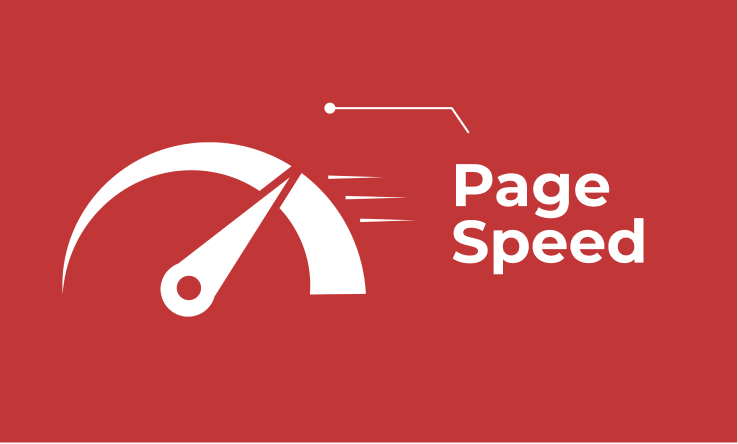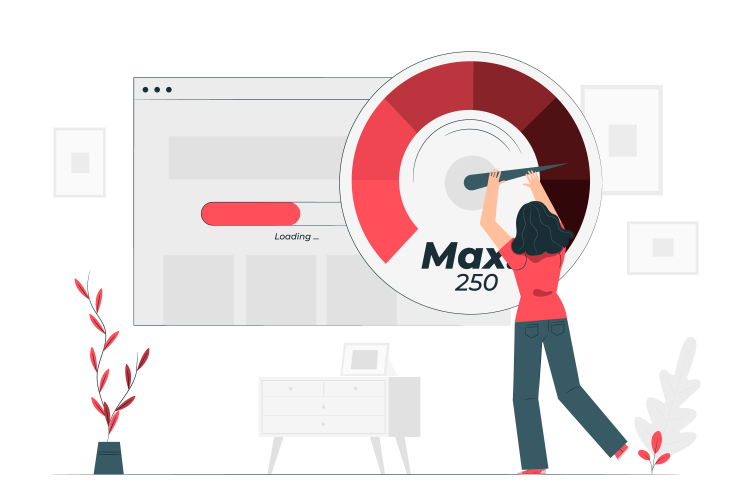
Impact of Page Speed on User Experience and SEO
In the digital ecosystem, Page Speed is more than just a metric that calculates the load time of a webpage. It is a cornerstone that shapes every user's online interaction, impacts user engagement and satisfaction levels, and influences the overall effectiveness of SEO techniques. Understanding its gravity is vital for both website developers and business owners who aspire to deliver an exemplary digital experience.
Page speed's significance has grown manifold with the digital age's rapid evolution. As consumers become increasingly comfortable with online interactions, their demands for convenience and swift information delivery have escalated. Therefore, in today's digital era, the speed of your website is a fundamental determinant of its success.
Understanding the Concepts
What is Page Speed?
In the simplest terms, Page Speed refers to the time a webpage takes to download and display its entire content on the requesting user's browser or device. However, in a broader context, it embodies the efficiency of a website in delivering requested content. This includes the time taken to display different content types like text, images, videos, and scripts.
Furthermore, it's essential to understand that Page Speed is not a static metric; it is influenced by a variety of factors. These include the quality of the user's network connection, the efficiency of the website's server, and the optimization of the webpage's content. In the grand scheme of digital interactions, Page Speed is an invaluable factor that has a profound influence on how users perceive a website and how search engines evaluate its quality.

User Experience (UX): An Overview
User Experience (UX) is a holistic concept that encapsulates every interaction a user has with a website or an application. It extends beyond mere aesthetics and navigational elements, delving into realms like content relevance, information architecture, functionality, and website performance, including load times. When a website prioritizes UX, it aligns its design and functionality with user expectations and needs, fostering an environment conducive to visitor engagement and retention.
A positive user experience instills a sense of trust and satisfaction among visitors, making them more likely to return and engage with the website on a deeper level. This could mean reading and sharing a blog post, making a purchase, or recommending the website to their peers. By contrast, poor UX, often characterized by elements such as complex navigation, irrelevant content, and slow load times, can deter users and prompt them to abandon the site.
Defining Search Engine Optimization (SEO)
Search Engine Optimization, or SEO, is a comprehensive strategy aimed at boosting a website's visibility on Search Engine Results Pages (SERPs). It is a combination of various techniques, ranging from keyword optimization and quality content creation to site architecture management and link building. The ultimate objective is to increase organic website traffic, enhance user engagement, and potentially improve the website's ranking on search engine results.
Among the vast array of factors that influence SEO, Page Speed has emerged as a crucial element. It's one of the many parameters search engines, including Google, use to evaluate a website's quality. Faster websites are often associated with superior user experience, prompting search engines to rank them higher than their slower counterparts. As such, Page Speed is not just a UX issue but a critical aspect that can make or break a website's SEO performance.
Impact of Page Speed on User Experience
Importance of Site Load Time for UX
The load time of a site directly shapes a user's initial perception. Users appreciate websites that load swiftly and display information quickly. Consequently, prolonged load times can lead to diminished user satisfaction, causing users to leave the website prematurely.
User Engagement and Website Loading Speed
User engagement and website loading speed share a significant correlation. Faster websites tend to engage users more effectively, incentivizing them to delve deeper into the site's content. This not only increases the chances of converting visitors into customers but also amplifies the average time spent per user on the website.
Mobile Optimization: A Necessity in the Modern Web Era
Mobile internet usage has seen an unprecedented rise in recent years. Consequently, mobile optimization, which ensures websites are user-friendly on mobile devices, has become a vital aspect of web development. Without it, mobile users may face difficulties navigating the website, leading to increased frustration and potentially higher bounce rates.
Case Study: How Improving Page Speed Enhanced UX
Let's consider a hypothetical Company X that runs an e-commerce platform. Despite offering a diverse range of products and a user-friendly interface, they noticed a high bounce rate. A thorough website audit identified slow page speed as a problem area. By optimizing the website's speed, Company X managed to reduce its bounce rate and increase user engagement, resulting in improved UX and a spike in sales.

How Page Speed Influences SEO
Page Speed as an SEO Ranking Factor
Page speed is a critical factor that influences SEO rankings. Faster websites tend to enjoy better visibility in search engine results, leading to more organic traffic. Moreover, since page speed impacts user experience, which is a known factor in Google's ranking algorithm, its importance in SEO cannot be overstated.
The Connection between Bounce Rate and Page Speed
A high bounce rate can be indicative of an issue with a website. If your website takes an exorbitantly long time to load, users might exit the site even before it completely loads, thus increasing the bounce rate. A high bounce rate can have detrimental effects on your SEO since search engines often interpret it as a sign of poor user experience.
Google’s Perspective: PageSpeed Insights & Core Web Vitals
Google provides invaluable tools such as PageSpeed Insights and Core Web Vitals to help website owners understand their website's performance. PageSpeed Insights provides a score based on the site's load time and suggests improvements. Similarly, Core Web Vitals focuses on providing insights into the loading, interactivity, and visual stability of web pages.
Case Study: SEO Improvements after Page Speed Optimization
Consider another hypothetical scenario involving Company Y, which operates in a highly competitive online industry. Despite their best efforts, they found their website consistently languishing in search engine results. After improving their page speed, they observed a significant jump in their website's search engine rankings.

Optimizing Page Speed for Improved UX and SEO
Understanding Website Performance and Web Performance Optimization (WPO)
Web Performance Optimization (WPO) involves a range of strategies to enhance a website's performance, such as minimizing server response time, optimizing images, reducing CSS and JavaScript files, and utilizing content distribution networks. These techniques aim to improve page speed and, consequently, enhance user experience and SEO.
Importance of Conversion Rate in Page Speed Optimization
A faster website naturally leads to a better user experience, which can translate into higher conversion rates. When a website loads quickly and provides the required information seamlessly, users are more likely to perform desired actions, whether it's signing up for a newsletter, making a purchase, or filling out a contact form.
Practical Tips to Improve Page Speed
Improving page speed involves a number of practical steps. You can start by reducing image file sizes without sacrificing their quality. Leveraging browser caching to store elements of your website on a user's browser can also speed up subsequent page loads. Minimizing HTTP requests by combining CSS and JavaScript files, and making sure your website's backend is updated regularly, are also proven strategies to enhance page speed.
Conclusion
Summary of the Impacts of Page Speed on UX and SEO
Page speed significantly affects both user experience and SEO. A faster-loading website not only enhances user engagement but also contributes to improved SEO rankings. Given the competitive digital landscape, businesses must prioritize page speed to stand out and succeed.
The Future of Web Performance: Ongoing Optimization
Web performance optimization is not a one-time activity; it is a continuous process. As user expectations and search engine algorithms evolve, websites must continuously adapt their optimization strategies to stay ahead.
References
- "How Page Speed Affects SEO and User Experience," Search Engine Journal.
- Google’s PageSpeed Insights tool.
- "The Ultimate Guide to Page Speed Optimization for WordPress," Kinsta blog.
- "How to Improve Website Loading Speed," Neil Patel's blog.
 Mark Petrenko
Mark Petrenko 
